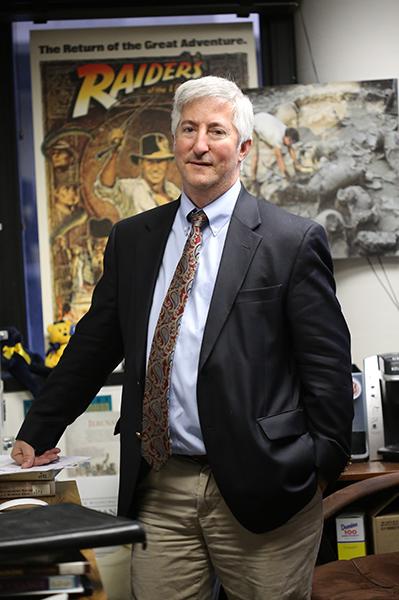Anthropology professor Eric Cline raises more than $150,000 for his North Israel archaeology excavations each year, and still spends nights on the digs calculating how long until the money runs out.
Cline’s continued success bringing in private donations and grants for his annual trips have led top administrators to point to him as one of GW’s most successful faculty fundraisers.
Mike Morsberger, the University’s former head of fundraising, called Cline one of his “academic heroes,” saying his unique research makes him a good candidate to meet with donors and convince them to give to GW.
“He finds dinosaurs and pots and skeletons. I just think he’s really cool,” Morsberger said.
As GW looks to raise $500 million for faculty and program support as part of its $1 billion campaign, professors will also be pushed to fundraise for themselves by elevating the University’s reputation and research profile. Cline’s grants, which come from donors and foundations, also contribute to GW’s overall research total.
Despite his reputation and years of successful excavations at the Kabri and Megiddo digs in Northern Israel – which have led to discoveries like that of a 2,700-year-old cellar – Cline said each year he worries he won’t have enough money to cover the cost of the trip.
“It’s tough, and if we don’t get the money, we can’t go,” Cline said.
Once the 60-person team arrives in Israel, they run on a “shoestring” budget with team members paying for their flights as well as room and board, he said.
Cline typically completes his digs “on fumes” with as little as $2,000 or $3,000 left to put toward preservation of his findings. Several years ago, Cline had to shut a dig down three days early and lay off several workers when the money dried up.
But as research spending decreases nationwide, Cline has become a standout at GW for consistently being able to pull in grants. That’s earned him the reputation as one of the University’s strongest faculty fundraisers.
Vice President for Research Leo Chalupa said the current environment for funding is “the most competitive in history,” making it hard to win grants even with the most detailed proposals.
“This is the kind of situation where the [review panel] says, ‘This is a very good grant, but you’re not going to get the funding. It’s just not good enough,’” Chalupa said.
Despite that competitive environment, GW’s research expenditures exceeded expectations and increased 11 percent last year.
Jeffrey Blomster, an associate professor of anthropology, said applying for grants is “pretty competitive,” and estimated that only about 20 percent of all projects get funded. Blomster landed a $300,000 grant from the National Science Foundation about a year ago as part of a three-year-long research project on social inequality in ancient Mexican civilizations.
“The fundraising issue is tricky, and I know Dr. Cline is really good at that. He’s been able to tap into a lot of private funds,” Blomster said.
Individual donors who help fund Cline’s trips have to perfectly fit a certain formula: they need to understand the importance of a dig and have the money to put behind it. He said once a man came to dig at an excavation site and ended up giving $5,000 because he thought Cline’s team seemed “strapped for cash.”
“They like archaeology. They realize it’s importance, but it is really up to the individual person as to whether they want to give or not,” Cline said.
Fundraising for the digs requires money for the excavation as well as conservation and preservation of artifacts after the trip. Cline said he’s already started fundraising for his trip next summer, submitting several grant proposals and creating a GoFundMe page with a $75,000 goal.
But even with that effort, Cline said he usually doesn’t know if he has enough money for the trip until winter each year. Cline has made four- to six-week-long summer trips to the excavation sites for years and also teaches two archaeology classes to the teams of students he brings along.
Greg Hughes, a senior majoring in history and minoring in archeology, worked with Cline at Megiddo during summer 2012, which he called a hands-on opportunity to work in places and with artifacts he had previously only read about.
“It’s one thing to read about something, it’s another thing to put your hand on it and put out of the dirt,” Hughes said.







